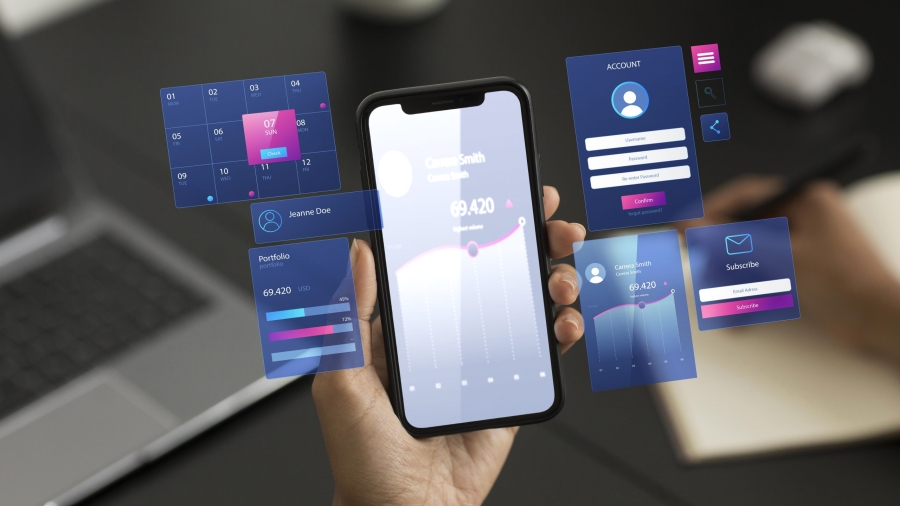In 2025, mobile usage has reached new heights. People rely on smartphones, tablets, smartwatches, and even foldable devices to manage their work, entertainment, and daily tasks. Each device has its own ecosystem—Android, iOS, HarmonyOS, and even niche operating systems.
For businesses and developers, the challenge is clear: how do you deliver a consistent, high-quality app experience across all these platforms without doubling development time and cost?
The answer is cross-platform mobile app development. Instead of building two separate apps—one for Android and one for iOS—developers can now use a single codebase that runs across multiple operating systems. Thanks to advanced frameworks like Flutter, React Native, and Kotlin Multiplatform, cross-platform development has matured into a powerful solution that combines speed, cost efficiency, and near-native performance.
This guide explores everything you need to know about cross-platform development in 2025—its benefits, popular frameworks, business value, real-world examples, challenges, and the future of this technology.
What Is Cross-Platform Mobile App Development?
Cross-platform mobile app development is the process of creating software applications that work seamlessly across multiple platforms—most commonly Android and iOS—using a single shared codebase.
Instead of writing the same app twice in Swift (for iOS) and Kotlin/Java (for Android), developers use frameworks that “translate” or “bridge” code into native experiences.
The result:
Faster development cycles
Lower costs
Wider audience reach
Consistent UI/UX across devices
Why Cross-Platform Development Matters in 2025
1. Speed to Market
Launching apps on both iOS and Android at the same time is crucial for competitive advantage. Cross-platform frameworks allow businesses to build once, deploy everywhere, significantly reducing time-to-market.
2. Cost Efficiency
Hiring two separate teams—one for Android and one for iOS—can be costly. Cross-platform development allows companies to work with a single team, reusing up to 80–90% of the code.
3. Consistent User Experience
Users expect apps to look and feel the same regardless of device. Cross-platform tools ensure design consistency while still allowing customization for platform-specific features.
4. Growing Ecosystem & Tooling
Frameworks like Flutter and React Native have matured with massive libraries, plugins, and community support. They make it easier to add functionality—like payments, push notifications, or AR—without reinventing the wheel.
Top Cross-Platform Frameworks of 2025
1. Flutter (Google)
Uses the Dart programming language
Known for beautiful, high-performance UIs
Features Hot Reload for instant code changes
Strong community and enterprise adoption
Use Cases:
Apps requiring rich visuals (e.g., fintech, social media, e-commerce)
Businesses looking for fast prototyping
2. React Native (Meta/Facebook)
Uses JavaScript/TypeScript
Bridges code to native components
Massive library ecosystem
Strong support for web developers transitioning into mobile
Use Cases:
Apps that require a native-like feel
Startups with teams familiar with JavaScript
3. Kotlin Multiplatform (JetBrains)
Shares business logic across platforms
Allows writing platform-specific code where necessary
Best for complex apps needing deep native integration
Use Cases:
Large-scale enterprise apps
Apps requiring heavy device-specific features
4. Progressive Web Apps (PWAs)
Run in browsers, installable like apps
Cost-effective for businesses that want a lightweight solution
Not as powerful as native apps but great for simple services
5. .NET MAUI (Microsoft)
Successor to Xamarin
Part of the .NET ecosystem
Ideal for companies already invested in Microsoft technologies
Business Benefits of Cross-Platform Development
Wider Market Reach – Target iOS, Android, and even desktops/web with one codebase.
Faster Updates – Push updates simultaneously across all platforms.
Reduced Maintenance Costs – One team, one codebase, fewer bugs.
Scalability – Easier to add new features across platforms at once.
Future-Ready – Frameworks evolve to support new devices like foldables and wearables.
Real-World Examples
Alibaba – Uses Flutter for its Xianyu app (over 50M users).
Facebook & Instagram – Built with React Native.
Netflix – Uses Kotlin Multiplatform for code sharing.
BMW – Uses Flutter for its car app ecosystem.
Challenges & Limitations
While cross-platform development is powerful, it isn’t always perfect:
Performance Limitations – For apps requiring heavy 3D graphics (like AAA games), native may still be better.
Platform-Specific Features – Some hardware integrations (like ARKit for iOS) may need custom native coding.
Framework Learning Curve – Teams may need to adopt new languages (e.g., Dart for Flutter).
Cross-Platform vs Native: Which Should You Choose?
| Feature | Cross-Platform Apps | Native Apps |
|---|---|---|
| Development Speed | Fast (one codebase) | Slower (separate codebases) |
| Cost | Lower | Higher |
| Performance | High (but not always 100% native) | Best performance |
| User Experience | Consistent across devices | Tailored per platform |
| Maintenance | Easier (one codebase) | More complex |
The Future of Cross-Platform Mobile App Development
Looking ahead to 2026 and beyond, several trends will shape this space:
AI-Powered Code Generation – AI tools will help auto-generate cross-platform code.
More Device Support – Support for AR/VR, IoT, and smart wearables.
Super Apps & Mini Apps – Cross-platform will power multi-service ecosystems.
Cloud-Driven Development – Cloud IDEs and serverless backends will further simplify cross-platform deployment.
Conclusion
Cross-platform mobile app development is no longer a compromise—it’s a strategic advantage. Businesses in 2025 can build apps faster, cheaper, and with quality close to native, thanks to powerful frameworks like Flutter, React Native, Kotlin Multiplatform, and .NET MAUI.
If your business needs an app that reaches more users without doubling costs, cross-platform development is the way forward.










